On the corner of the road into Cambridge, in Trumpington, is a very simple looking war memorial. Up close, you notice the detail and the figures. With no information or makers mark near-by you have to google the sculptor. In this case and rather unexpectedly it is by Eric Gill. Gill is remembered today as a typographic designer and sculptor, this most famous in Britain being Prospero and Ariel on Broadcasting House, London.
The four pictograph designs (an individual design for each side) for the Trumpington Cross are subtlety arranged at the base of the cross. Below that on the pedestal are Norman looking arches with the names of the fallen from WWII between.
For Trumpington, Cambridgeshire, he created a plain ‘cross of vaguely medieval form’ adorned with four small reliefs. One of the reliefs was based on a design by the author David Jones (like Gill a convert to Roman Catholicism), who had joined Gill’s radical ‘guild […] of craftsmen’ which sought to revive the communal spirit of medieval society. †
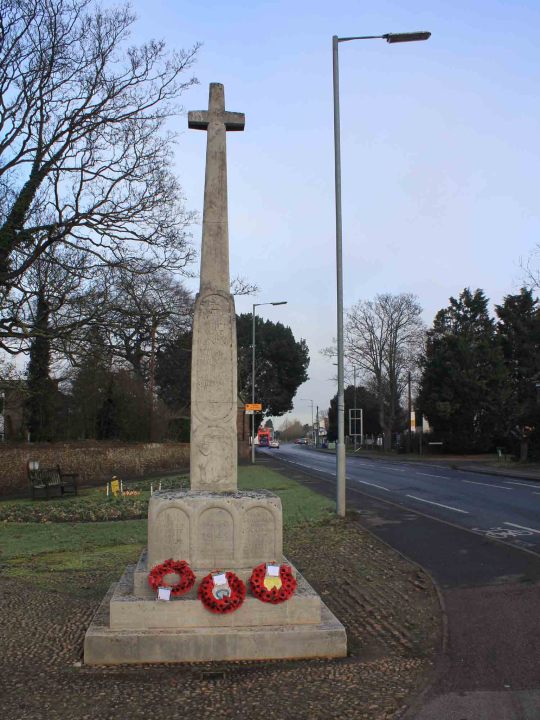
This was memorial was commissioned by the village itself, although the Pemberton family who owned Trumpington Hall has lost their son, Francis, in October 1914 and where the main donors to the village’s war memorial fun. The memorial cross that Gill designed was unveiled in 1921 and stands outside the gates of the hall. This spot was the most prominent corner of the village, on the junction of the village street and the main road to Cambridge.‡
It is the four images carved in relief on panels at the base of the cross which are so striking. Two of these represent religious subjects – St Michael triumphant in defeating the Devil, and the Madonna and Child (the parish church is dedicated to SS. Mary and Michael) – while the third depicts St George slaying the dragon. So far, so conventional. However, the fourth panel shows an exhausted soldier returning from the war, and this is one of the most profound, though least known, images of the experience of war to appear on any war memorial in Britain or Germany.‡

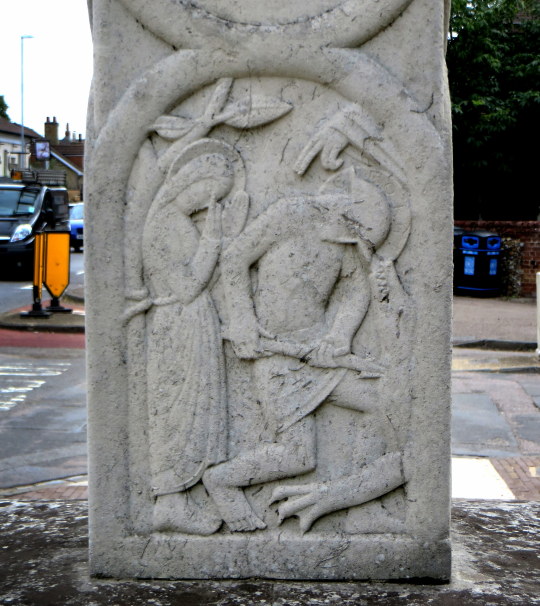
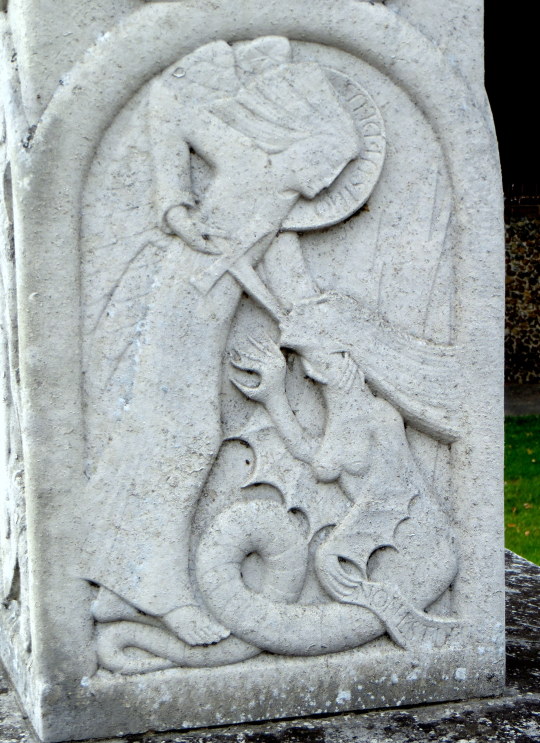
The Madonna and Child side below, seams to need some restoration as it’s weathering away.
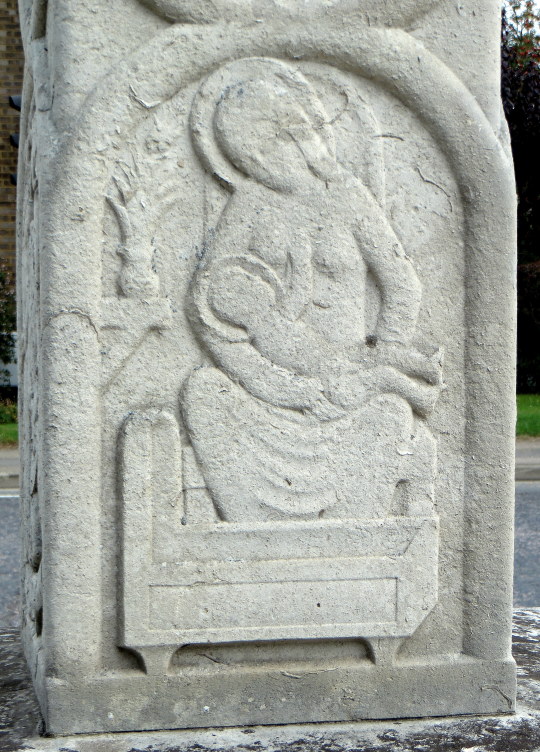

The four sides of the shaft are inscribed with the names of 36 men from WWI and on the base a later addition of 8 men from WWII and what I believe is one from a subsequent war.

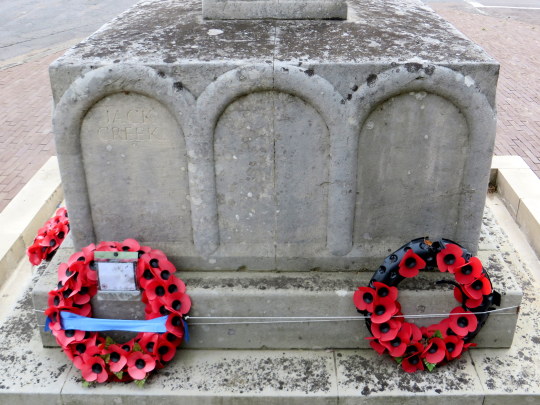
† The Great War and Medieval Memory: War, Remembrance and Medievalism in Britain and Germany, 1914-1940
by Dr Stefan Goebel, 2007. 9780521854153 p.60.
‡ The silent morning (Cultural History of Modern War) by Trudi Tate, Kate Kennedy, 2015, 9781784991166 p.326.